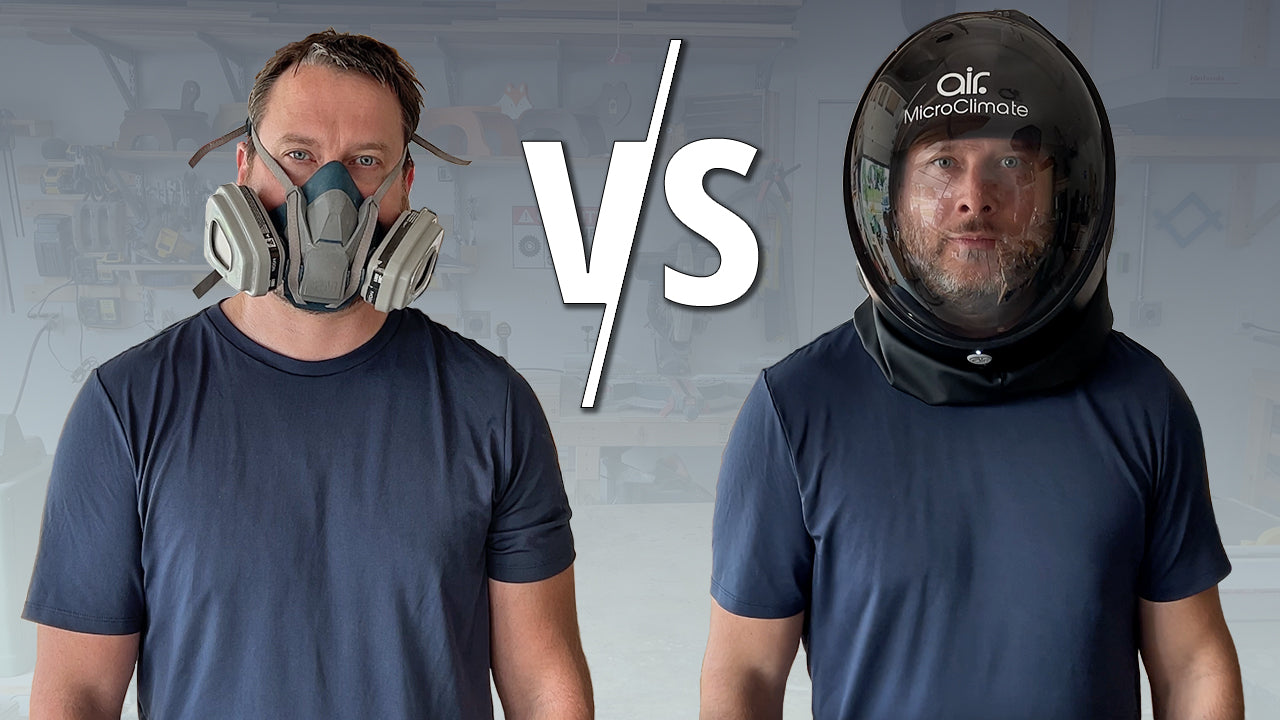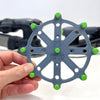Microclimate Helmet Review: Is It Better Than 3M Masks?

Microclimate Air Helmet Review: Is This the Future of Dust Protection?
If you spend time in the workshop, you know the struggle: dust in your eyes, fogged-up glasses, and clunky respirators that leave you sweating after 15 minutes. Traditional masks like the popular 3M respirator do a decent job filtering particles, but they fall short on comfort and all-around protection. That’s where the Air Microclimate helmet comes in—a futuristic alternative that looks more like a space suit than shop gear.
In this review, I’ll break down how the Microclimate helmet works, its pros and cons, how it stacks up against the classic 3M dust mask, and whether it’s worth the $500+ price tag.
If Reading Isn't Your Thing Watch My Full Review Video
What Is the Microclimate Air Helmet?
The Microclimate helmet is a full-face powered air system designed to keep dust, overspray, and fine particles out of your breathing space. Instead of just covering your mouth and nose, it creates a protective bubble of airflow around your entire head.
It looks futuristic—think spaceman helmet meets motorcycle visor—and it’s surprisingly comfortable once you strap it in. A rear shroud wraps around your head, tightened by adjustable straps, making it a universal fit for adults and even teens.
How It Works
Unlike a standard dust mask that relies on passive filters, the Microclimate system actively pulls air in through external filters. Inside the helmet, small fans circulate clean air around your face and neck, creating constant airflow.
This airflow has a big benefit: no fogging. If you’ve ever worn glasses or a mask while sanding, painting, or cutting wood, you know how frustrating fogged-up lenses can be. With Microclimate, the circulating air keeps the visor crystal clear.
Comparing Microclimate vs. 3M Respirator
Most makers are familiar with the classic 3M half-mask respirator. It’s reliable, affordable (around $60), and filters out a wide range of airborne chemicals when paired with the right cartridges. But it comes with some drawbacks:
-
No eye protection — you’ll need separate safety glasses.
-
Sweaty and uncomfortable in hot shops.
-
Bulky when paired with glasses or hearing protection.
The Microclimate helmet solves these issues by combining eye, nose, and mouth protection into one unit. It’s more comfortable for longer sessions, especially with the airflow system cooling your face.
That said, the Microclimate helmet is not designed for filtering hazardous chemical vapors the way a professional respirator is. It’s primarily for dust and particulate protection—perfect for woodworking, sanding, or spray finishing, but not industrial solvent exposure.
Comfort and Usability
The helmet feels surprisingly lightweight given its size. Putting it on is straightforward: slide your head into the shroud, tighten the straps, and power on the fans. Within seconds, you feel a steady flow of cool air.
One standout benefit is how much easier it is than juggling multiple pieces of PPE. No more wrestling with a respirator, then slipping glasses on top. This all-in-one design cuts down on setup and distractions.
Price and Value
Here’s the sticking point: the Microclimate helmet costs $500–$600 depending on configuration. That’s nearly 10 times the cost of a 3M respirator.
However, if you compare it to high-end professional powered air purifying respirators (PAPRs), the price isn’t out of range. Many professional PAPR systems cost $400–$700, and most still struggle with fogging or bulkiness.
So while it’s expensive, the comfort, airflow, and convenience may justify the premium for frequent workshop users.
If you want to get one use my 10% discount code and SAVE 10% on your order, 👉🏻 MillerMade10
Minor Frustrations
No product is perfect, and a few issues stood out during testing:
-
Elastic shroud attachment can pop loose after repeated use.
-
Storage concerns — unlike a small respirator you can toss on a shelf, this requires a hanger or protected spot.
-
Scratch risk — the large visor could get damaged if dropped or mishandled.
At this price, it would be nice if Microclimate included an extra visor replacement or sturdier connection system.
Is the Microclimate Helmet Worth It?
If you’re a weekend DIYer who only sands occasionally, the classic 3M respirator might be all you need. But if you spend serious hours in a dusty shop—especially woodworking or sanding without perfect dust collection—the Microclimate helmet can be a game-changer.
-
No fogging.
-
All-in-one protection.
-
Surprisingly comfortable airflow.
For many makers, avoiding coughing fits and eye irritation is worth the price. Think of it as an investment in long-term shop comfort and health.
Final Thoughts
The Microclimate air helmet is more than just a respirator—it’s a new take on shop safety. While pricey, it solves real pain points that traditional masks don’t. If you value comfort, visibility, and integrated protection, it’s absolutely worth considering.
👉🏻 Want to see it in action? Check out the Microclimate helmet here and decide if it’s the right fit for your workshop.
-
Posted in
cool tools, dust protection, microclimate helmet




